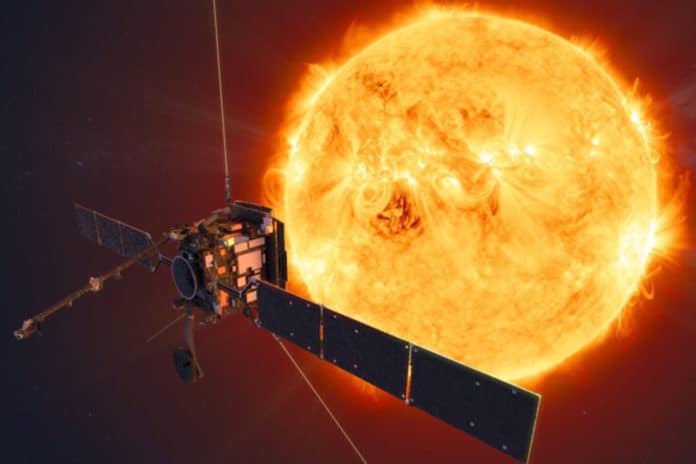Solar wind is a constant stream of plasma and particles emanating from the sun. This stream of energized and charged particles emanating from the sun travels at speeds as high as 900 km/s and a temperature of 1 million degrees (Celsius).
These ejections significantly impact the conditions of our solar system and constantly hit the Earth.
It has long puzzled scientists: why the bursts of hot gas from the sun do not cool down as fast as expected?
In a new study, scientists from the Science and Technology Facilities Council (STFC) and led by UCL, used supercomputer simulations to solve this puzzle.
The simulations were carried out using the Distributed Research utilizing Advanced Computing (DiRAC) high-performance computing (HPC) facility’s Data Intensive at Leicester service, funded by STFC.
The solar wind is ten times hotter than expected when it hits the Earth. Its temperature is about 100,000 to 200,000 degrees Celsius.
The simulations reveal that the solar wind remains hot for longer because of small-scale magnetic reconnection that forms in the solar wind turbulence. This phenomenon occurs when two opposing magnetic field lines break and reconnect with each other, releasing vast amounts of energy.
The exact process takes place in the sun’s outer atmosphere, generating large flares.
Lead author Jefferson Agudelo of UCL said: “Magnetic reconnection occurs almost spontaneously and all the time in the turbulent solar wind. This type of reconnection typically occurs across an area of several hundred kilometers—which is tiny compared to the vast dimensions of space. Using the power of supercomputers, we have been able to approach this problem like never before. The magnetic reconnection events we observe in the simulation are so complicated and asymmetric; we are continuing our analysis of these events.”
Scientists will confirm their predictions by comparing their data with that collected by the European Space Agency’s (ESA) latest flagship mission, Solar Orbiter.
Agudelo explained: “This is a fascinating time to combine huge plasma simulations with the latest Solar Orbiter observations. Our understanding of reconnection and turbulence could take a major leap forward by combining our simulations with the new data from the Solar Orbiter.”
Journal Reference:
- Jefferson A. Agudelo Rueda et al. Three-dimensional magnetic reconnection in particle-in-cell simulations of anisotropic plasma turbulence, Journal of Plasma Physics (2021). DOI: 10.1017/S0022377821000404
